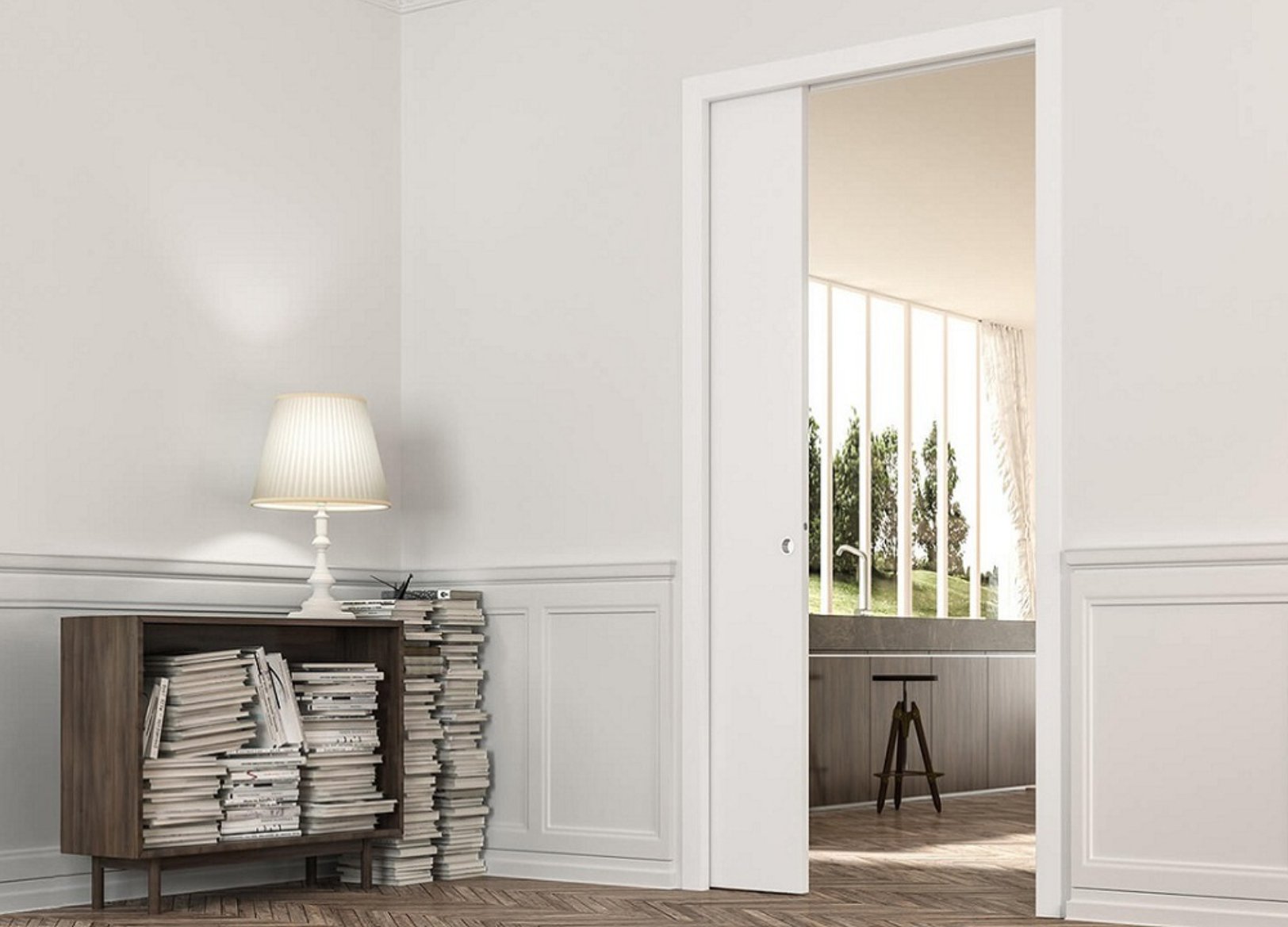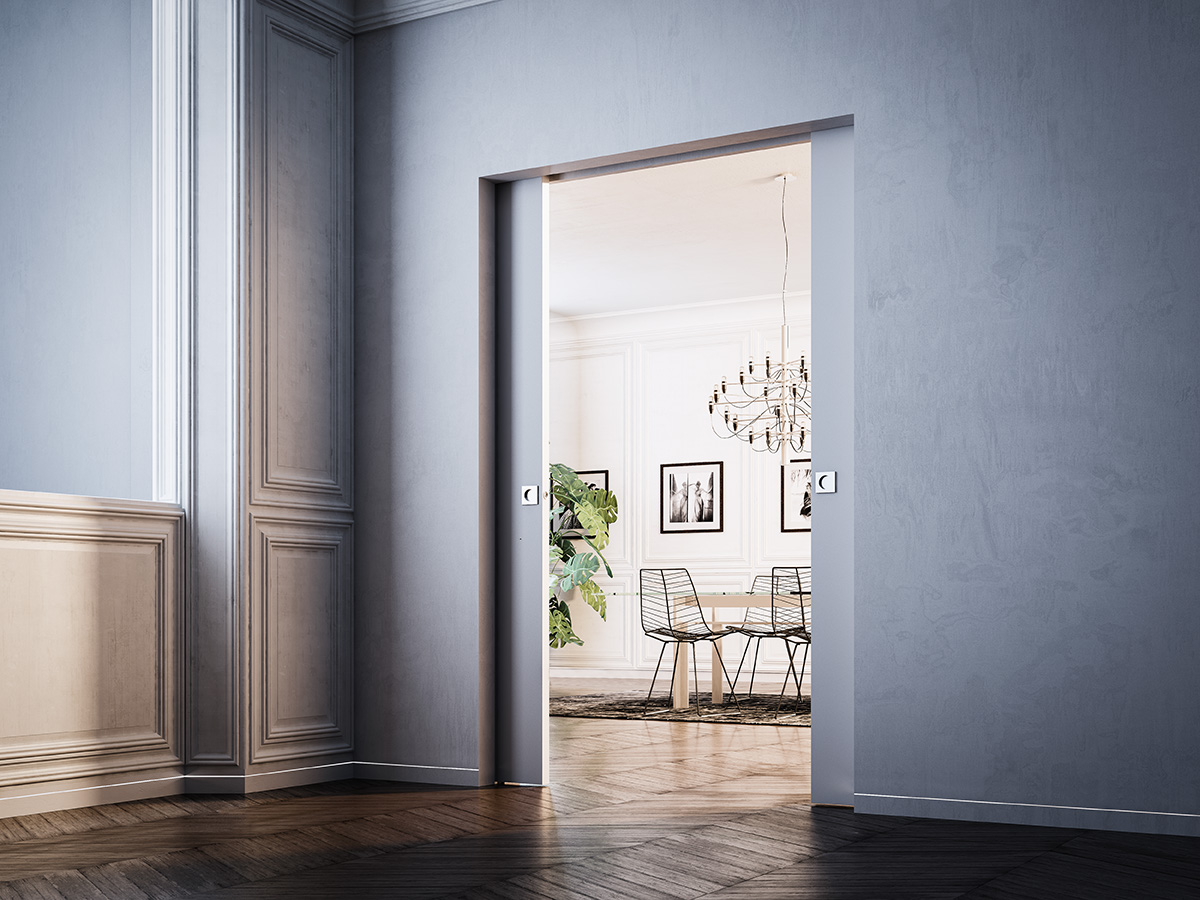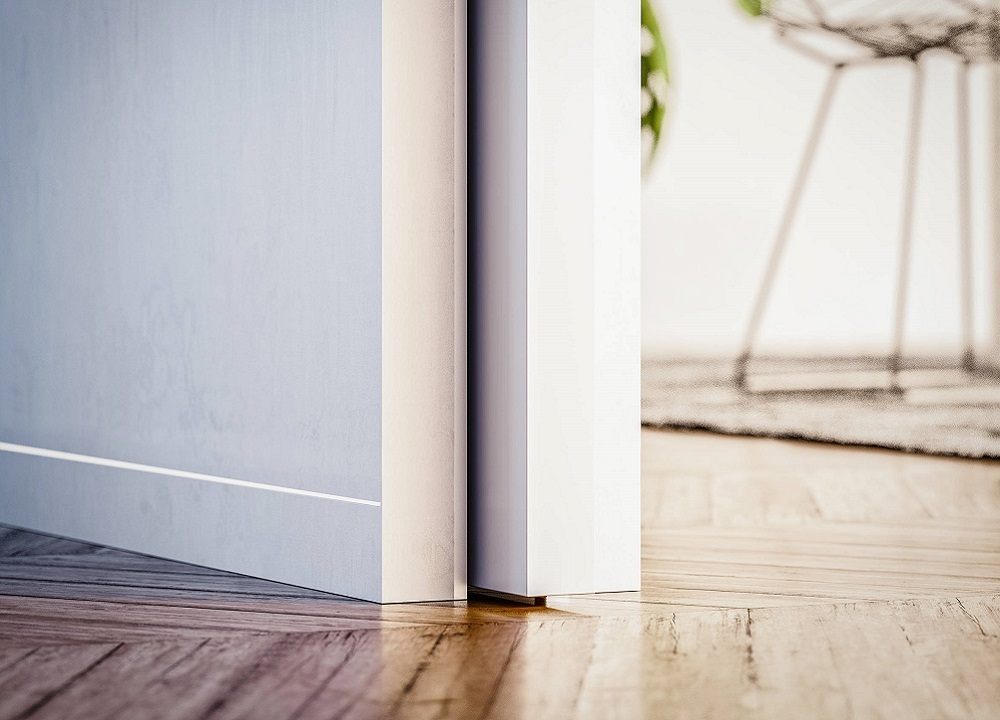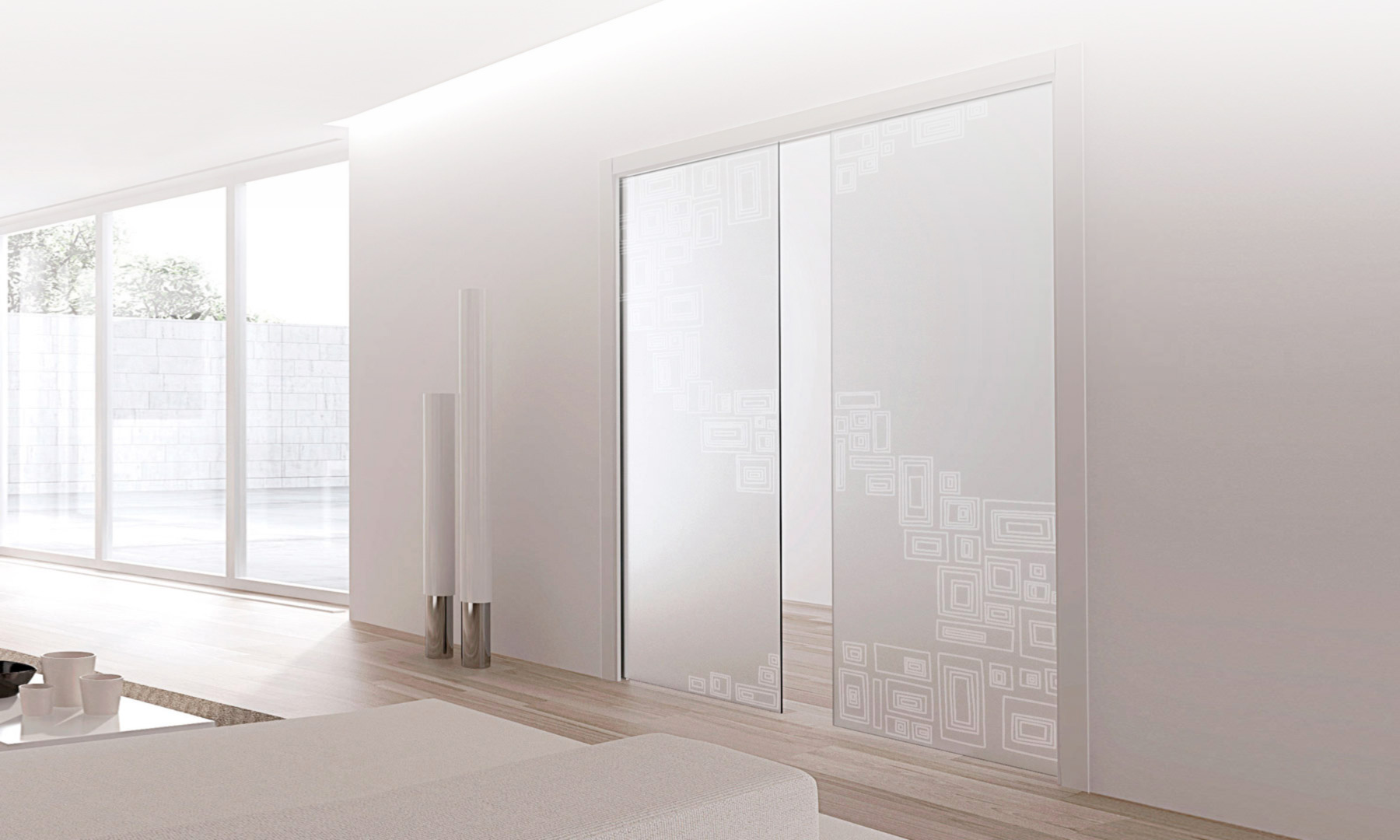Pocket Doors – a good idea?
Pocket Doors – a good idea?
Space-saving and stylish – pocket doors can be a great option for small rooms and open-plan interiors alike, but choose your kit carefully.
What is a pocket door?
A pocket door slides into a space inside the adjacent wall, as opposed to conventional, hinged door which opens into a room. Pocket doors can be the perfect solution for small rooms that might not have space for a standard hinged door to swing open, such as en-suites, pantries, closets, box rooms, kitchens, bathrooms and more. They free up valuable floor and wall space for furniture and fixtures.
 Image supplied by Pocketdoorshop
Image supplied by Pocketdoorshop
Equally, pocket doors can be ideal for a multi-purpose space - changing the layout, dimensions and light. A living room and kitchen-dining area, for example, could be divided by double pocket doors where a wall might once have been. The doors slide away into hidden pockets when not in use to create one big space with better flow, for example when entertaining. But there is still the flexibility to have two separate rooms for a bit of privacy at other times, for instance when watching TV in the evening.
Configurations
Pocket doors are available in a wide range of configurations from a single panel to six panels. There are many different styles and sizes. Options include architrave-free for minimalist homes and even curvy pocket doors for curved walls. Glazed pocket doors are on-trend and look chic. Typical pocket door installations include:
- A single door leaf (e.g. kitchen, bathroom or box room)
- Two doors converging/bi-parting (e.g. lounge/dining room dividers). For a wider doorway, the doors can slide into a single pocket on one side.
- Large leaves can be used as screens to separate bedroom and living areas and enable flexible open plan schemes while allowing privacy when needed (e.g. loft living).
Specialist suppliers include Eclisse and Scringo.
Pocket doors generally run along an upper track but can slide along a recessed track on the floor. This means the sliding door is less likely to flap about when in the open position as it has a more robust fixing.

Image supplied by Pocketdoorshop
Pocket door kits
Typically, there are two main types of pocket door kit:-
- Pocket door framework which is then integrated within a stud wall construction by you or your builder. The timber frame creates an envelope for the door to glide into, hiding the door within the wall cavity.
- Steel-framed pocket door cassette systems. These provide a preassembled self-contained pocket for the door to slide into. Steel uprights and horizontals make up the pocket, so there is less risk of warping.
Heavier doors may require the steel-framed cassette kit whereas lightweight, hollow doors can be suitable for both. Eclisse pocket door kits are designed for use with doors upto 80kg in weight (120kg on request), compared to Scringo pocket door cassette systems which can take a maximum 100kg door weight, for example.
Installing pocket doors
If you are at the design stage, build a stud wall thick enough to house the pocket door. There are 10 standard UK door sizes, so if you know the door size you will be using, you can work out the overall wall opening you will need to accommodate a pocket door framework.
Some specialist suppliers have online sizing tables. For instance, for a door measuring 626mm x 2040mm, the overall opening for an Eclisse Pocket Door system will need to be 1288mm 2115mm, according to the Pocketdoorshop. Non-standard sizes are likely to cost more.
Alternatively, if you have the space, you can use the maximum overall dimension of the framework to decide the door size and the opening space. This can give more flexibility and choice.
Pockets are often available in two standard widths for a finished wall thickness of either 100mm or 125mm. So, you can install the standard 12.5mm plasterboard over the pocket providing a finished wall thickness of either 100mm or 125mm. Further layers of plasterboard can be added to increase the overall wall thickness.
Costs to consider
Prefabricated pocket door cassette systems tend to be more expensive but are quicker to fit than the standard self-build pocket systems. Timber pocket door systems prices start at around £99 each (Ironmongery Direct) and usually include just the header, support studs, rubber bumper, door guide, screws and nails. It’s worth noting the doors must be ordered separately. Prices for Eclisse pocket door frameworks start at around £239 plus VAT, prices correct in November 2021. Items such as flush door pulls, locks and soft closers may need to be bought separately.
Metal frame kits typically cost more. Prices start at around £120. The Italian designed and manufactured Scringo pocket door cassette door measuring 2040mm x 626mm has a £579.60 price tag, including VAT. Door, plasterboard and doorframes are not included.
Retrofitting a pocket door
While not impossible, it can be tricky to retrofit a pocket door into a stud wall as it may involve working around switches, sockets, wiring, pipework and radiators. It’s essential to check whether a wall is loadbearing before adding a new pocket door installation. Loadbearing walls may require a lintel above and will need to be propped up during building work.
Solid walls without a cavity can be a major obstacle, too. One solution is to construct a false pocket by installing a stud wall. Alternatively, install a door which slides back to sit adjacent to the solid wall – so long as there is sufficient wall space.

Image supplied by Pocketdoorshop
Pocket door pros and cons
Conventional hinged doors can be difficult for disabled people to use due to the combination of gripping a handle while side-stepping the arc of the door. For instance, if an individual has poor grip, reduced muscle power or balance. This can be compounded if hands are needed to hold a walking frame or stick or move a wheelchair. Whereas a sliding pocket door can opened/closed while remaining stationary, making it easier for disabled people to use.
There are some disadvantages to pocket doors, too. They don’t close as tightly as traditional doors and there is often more space under a pocket door. As a result, they are not as effective at stopping noise, odours and light travelling from one room to the next. Nor are they typically fireproof though fire-proof versions can be specified.
Most of us opt for traditional hinged doors in our homes because they are familiar. But the space-saving, easy-to-use pocket door has a role and is worth considering for both small rooms and open plan layouts. It’s probably worth investing in a higher quality kit as it’s likely to last longer.
 Image supplied by Pocketdoorshop
Image supplied by Pocketdoorshop
